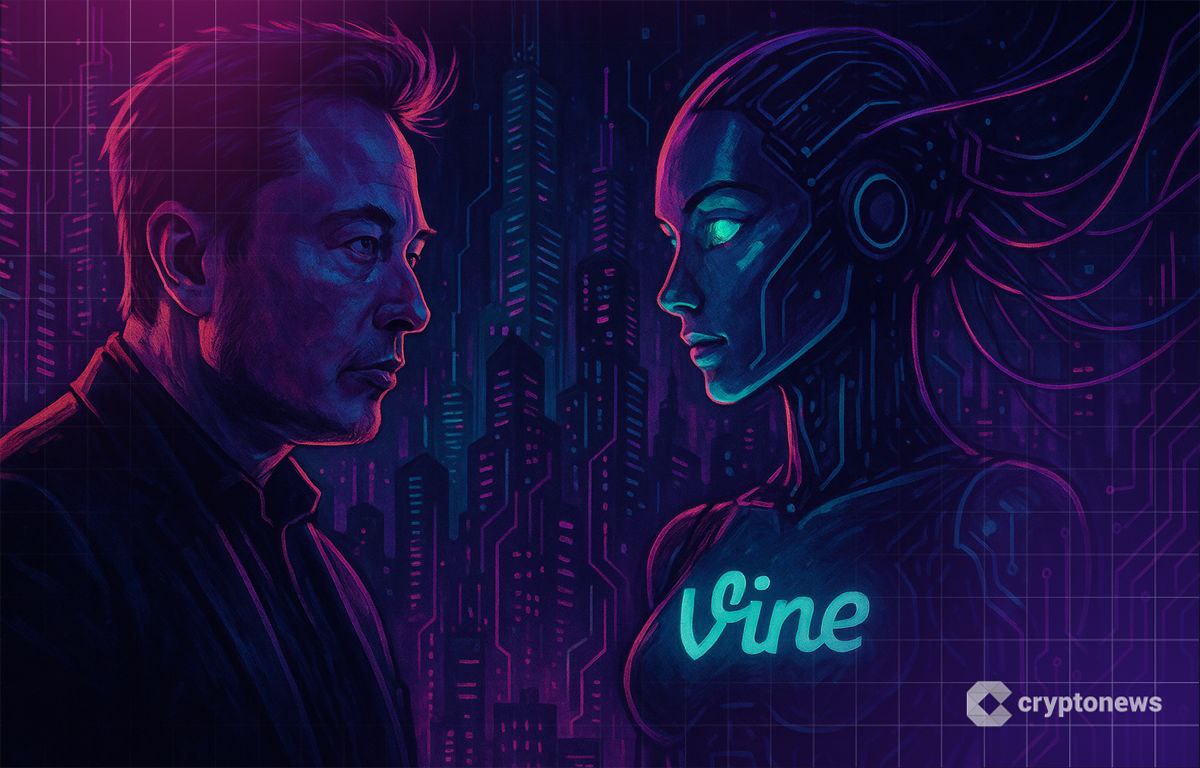July 25, 2025
5 min read
@jeffgogo3
Elon Musk revives Vine in an AI-driven format, aiming to blend short videos with crypto and social innovation.
Elon Musk Relaunches Vine in ‘AI Form’: What You Need to Know
Elon Musk announced on July 24, 2025, that the popular short video service Vine will be making a comeback, this time in an artificial intelligence (AI) format.“We’re bringing back Vine, but in AI form.”
— Elon Musk (@elonmusk) July 24, 2025The Tesla and SpaceX CEO shared this update on his X platform (formerly Twitter), but did not provide further details about the relaunch of the once viral app, which was discontinued in 2017.
Vine’s Crypto Resurgence
Following Musk’s announcement, several cryptocurrency tokens named after Vine surged sharply. The most notable, Vine Coin, climbed over 120% to a price of $0.0794 shortly after the news. Launched on the Solana blockchain in January 2025, Vine Coin gained traction after nostalgic users petitioned Musk for Vine’s return. At the time of writing, Vine Coin trades at around $0.0538 with a daily volume of $309 million, down from its all-time high of $0.40 reached in January. Shawn Young, chief analyst at MEXC crypto exchange, commented:“If the Vine relaunch incorporates real-time trend tagging and token-gated content systems, it could evolve into a platform for crypto-native social capital.”He added that gamified engagement through token incentives and integration with Musk’s ecosystem (like X or Dogecoin) could position Vine as a next-generation SocialFi platform.
What Is Vine?
Founded in 2012 by Rus Yusupov, Dom Hoffman, and Colin Kroll, Vine was a social media app centered on sharing 6-second looping videos. It quickly became a cultural phenomenon, reaching 200 million active users by December 2015. Twitter, led by Jack Dorsey at the time, acquired Vine for approximately $30 million. Vine videos could be shared across other platforms like Facebook and Twitter. Vine played a pivotal role in shaping modern internet culture, launching the careers of influencers such as Logan Paul and David Dobrik. As Young explains:“Vine essentially codified the baseline architecture of virality via looping videos, catchy edits, and memes, all of which shaped early internet humor.”However, Vine struggled commercially as creators were not monetized, unlike competitors such as YouTube, which offered revenue sharing and sponsorships. Twitter shut down Vine in January 2017 amid rising competition from Snapchat, YouTube, Instagram, and the emergence of TikTok (Douyin in China). The Vine archive remained accessible until 2019 when Twitter discontinued the service entirely. In October 2022, Elon Musk acquired Twitter for $44 billion and rebranded it as X.
Why Is Musk Reviving Vine?
Musk envisions X as an “everything app,” inspired by China’s WeChat, integrating social media, financial payments, smart home controls, and ride-hailing. X has recently found success with its AI chatbot, Grok. Musk first floated the idea of reviving Vine in April 2024, conducting a poll on X where 70% of users voted in favor of bringing Vine back. The exact nature of Vine’s return—whether as part of X or a standalone app—remains unclear. Experts see the relaunch as a strategic move amid uncertainty over TikTok’s future in the U.S., where government officials have raised security concerns about the Chinese-owned app. Nikki Martinez, short-form video content lead at social media agency Hype, cautions:“Even if Vine comes back and it’s built into X, it’s going to take time for creators and audiences to fully shift.”She notes TikTok’s strong culture and algorithm, warning that unless Vine offers unique features or clear monetization, adoption may be slow.
The Crypto Connection
Could the new Vine become the go-to platform for crypto discourse, news, and meme culture? Illia Otychenko, lead analyst at crypto exchange CEX.io, sees potential:“Vine’s original six-second format mirrors the time it takes to absorb a tweet, typically up to the standard 280-character limit. This gives the new Vine the potential to become the ‘video version of a tweet,’ enabling fast, engaging content tailored to crypto discourse.”He highlighted the excitement around Vine Coin’s price surge as a sign of community interest. Otychenko also pointed to crypto-native experiments like tokenized short-form content and meme coins linked to individual videos or viral moments, suggesting Vine could push these innovations further. Young added that generative AI tools such as voice cloning and automated meme remixing could bring hyper-personalized meme culture mainstream.
“For the crypto sector, where memes and social trends can move markets and shift narratives, this could be another inflection point.”He envisions AI-generated memes tied to real-time blockchain data and market trends, positioning Vine as a hub for entertainment, sentiment indexing, and trend forecasting in Web3.

